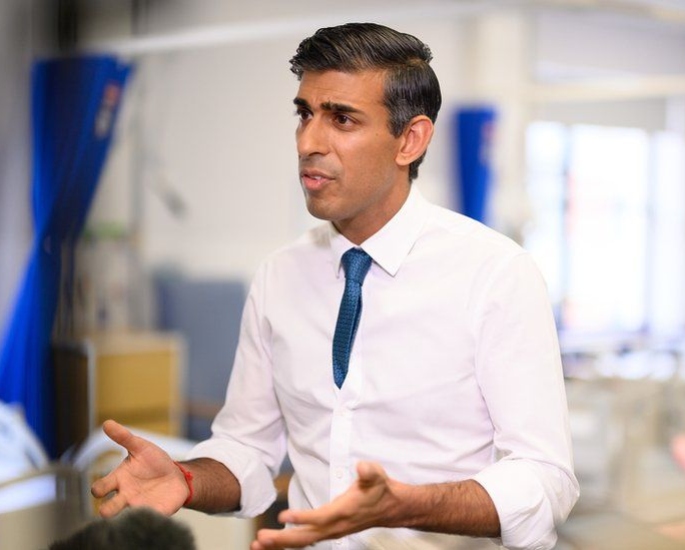Over 7.2 million people are waiting for treatment
From a lack of funding to understaffed hospitals, the NHS crisis is getting more severe than ever before.
Whilst Prime Minister Rishi Sunak, and the leaders before him, have continuously stated that plans for the healthcare sector are their priority, there has been no action.
All areas of the NHS have called for help for years, highlighting that hospitals, care homes and workers need more resources and better pay.
The addition of having to deal with the Covid pandemic derailed the NHS further.
In the aftermath, the government’s lack of compensation for the key worker’s frustrated staff members even more. And, their anger grew into strikes and backlash.
Their protests highlighted to the public how serious the NHS crisis has become.
Long wait times for patients, lack of hospital beds and poor retention are just some of the problems the sector faces.
Although, Rishi Sunak has outlined an emergency plan to help solve these issues over a two-year period.
A lot of people have their concerns and professionals think this two-year window is too long and the NHS may not even survive that long.
So, we look at how the NHS has gotten into this fragile state and whether Rishi Sunak can really succeed with his plan.
Why is the NHS in Crisis?
The NHS crisis is down to numerous problems that stem from a lack of funding and resources.
Whilst Covid-19 was an obvious aggressor towards an already startled healthcare sector, the government made no plans to help the recovery process.
With growing concerns, staff and patients are finding it hard to deal with the growing demand for care.
We look at more of the problems that Rishi Sunak has to recognise and solve very quickly.
Funding
Although funding has increased since 2011, it’s not at a level that fits a growing and ageing population.
The independent UK healthcare research group, Nuffield Trust, reported that spending stopped in 2010 relative to the changing population.
Unfortunately, even if the government comes through on its spending promises, it still won’t be enough to restore the foundation of the NHS.
Two professionals from Nuffield, John Appleby and Sally Gainsbury emphasised this, saying:
“Even if the latest spending pledges are delivered, it will still only bring the average annual increase between 2009/10 and 2024/25 to 0.5%.
“This is far below the long-run average of 2.6%, and comes against the backdrop of the health service trying to recover from a pandemic.”
One of the most astonishing examples of this lack of funding is the shortage of equipment.
Resources like beds have seen no significant rise, even though it’s one of the most in-demand items.
Astonishingly in 2012, there were 99,562 beds available across UK hospitals on average every day in December. But, in 2022, the number was 99,927.
This means in 10 years, the government has only invested in another 500 beds to spread across hospitals. Not even taking into account care homes or GPs.
Chronic Understaffing
Due to weak workforce planning and lack of accountability, the NHS staff shortages have been growing for years.
A lack of funding and new infrastructure has also meant that the number of new doctors getting trained is low.
Therefore, it has increased the workload for staff, most of whom are already working overtime or having to cover extra shifts.
Not only has this had an effect on patients, and the long wait times they are suffering, but it’s been a straining period for workers – both physically and mentally.
The addition of demoralising pay rises and tax rules means it’s even harder for the NHS to keep the doctors they already have.
The British Medical Association (BMA) has outlined that these pressures are becoming “unsustainable”.
In a survey BMA carried out in 2021, 43% of respondents in the healthcare industry agreed with the statement, “I plan to retire early”.
In addition, 50% also agreed with the statement, “I plan to work fewer hours after the pandemic”.
Local GPs are also feeling the anxiety of trying to manage their workload.
With the growing and ageing population, there has been a halt in the growth of the GP workforce.
Since 2015, the average number of patients per full-time GP has increased by 15%.
Therefore, the clinical and administrative trouble these GPS are facing is worrying, given that they severely lack any type of resources to get more staff.
Long Wait Times
Even before the pandemic in February 2020, 4.3 million people were already on a waiting list for care.
At the start of Covid-19, the suspension of non-urgent services and changes to the public’s behaviour meant the number of people joining the wait list initially dropped.
Despite improvements in early 2022, waiting times remain far higher than pre-Covid. BMA looked further into the figures and as of October 2022, they found:
- A record high of over 7.2 million people are waiting for treatment.
- 2.91 million patients waiting over 18 weeks for treatment.
- 410,983 patients waiting over a year for treatment.
- A median waiting time for treatment of 13.9 weeks – critically higher than the pre-Covid duration.
This has also led to a lack of GP referrals as there is no room in secondary care. But, those referrals are often rejected.
As there are no slots available, the number of unsuccessful referrals to outpatient services has risen from 238,859 in February 2020 to 401,115 in November 2021.
This 87% increase, as found by BMA, has emphasised just how problematic the NHS has become.
What’s Rishi Sunak’s Emergency Plan?
With mounting pressure from the public and key workers, Rishi Sunak has promised an emergency plan to help steer the NHS crisis towards a resolution.
In welcoming 2023, one of his five New Year pledges was to get the NHS’ record waiting list down, ensuring patients get quick access to care.
However, people are concerned about this promise as the list is expected to grow even bigger.
The figure that it could reach depends on the public, but it’s expected more people will turn up at hospitals than they would have during the pandemic.
The blueprint of the plan outlines a £1 billion fund that will add over 100 specialist mental health vehicles, 5000 hospital beds and 800 new ambulances to the NHS.
These tools are specifically aimed at helping with ambulance wait times and high delays for A&E admittance.
The £1 billion sum comes from the 2022 Autumn Statement when the government committed an additional £3 billion to support the NHS’ Covid recovery.
This is on top of the £12 billion that was originally going to be financed through a new health and social care levy.
But now, it will be funded by general taxation – again causing further public outcry over the government’s lack of transparency and constant u-turns.
Talking about the plan, Rishi said:
“[This will be] the largest and fastest-ever improvement in emergency waiting times.”
As part of this plan, the NHS confirmed that there are motives to increase specialist paediatric advice for children and direct access to urgent mental health support via NHS 111.
Under this proposal, some children would be referred on the same day with a specialist, avoiding hundreds of unnecessary hospital admissions.
However, health experts have stated that the NHS has over 133,000 vacancies and without action to address those positions, this plan won’t work.
Professor Phil Banfield, chair of the BMA’s ruling council declared:
“The NHS cannot afford to wait two years for the fraction of help that the government has proposed.”
“If the NHS has any chance of surviving that long, then we need to see immediate funding as well as steps taken to retain and boost our workforce.”
Helen Buckingham, director of strategy at the Nuffield Trust also gave her opinion, adding:
“[The plan contains] largely common sense proposals.
“But these would be difficult to achieve with a demoralised and burnt-out workforce seeing high rates of people leaving, and a social care system devastated by years of squeezed budgets and bad pay.”
To combat the opposing views, the Department of Health announced that the plan will include 3000 “hospital at home” beds.
This will allow more care for around 50,000 people a month, allowing them to get the treatment and comfort they need at home rather than in a hospital.
Upon announcing the provisions of the plan, Health Secretary Steve Barclay said:
“Today’s plan, which is backed by record investment, aims to rapidly cut waiting times, helping to deliver on one of the government’s five priorities.
“It gives patients the confidence that health and social care services will be there for them when they need them.”
It seems that Rishi Sunak’s plan is to confront the lack of resources as part of the NHS crisis first.
The main priority is to get more patients seen and of course, workers will need the tools to do that.
However, as mentioned before, the NHS need more staff to carry out procedures and care too.
Many professionals believe that if the Prime Minister doesn’t sort out the recruitment and retention of the NHS, then no plan will succeed.
Ultimately, short-term fixes won’t resolve long-term challenges.































































